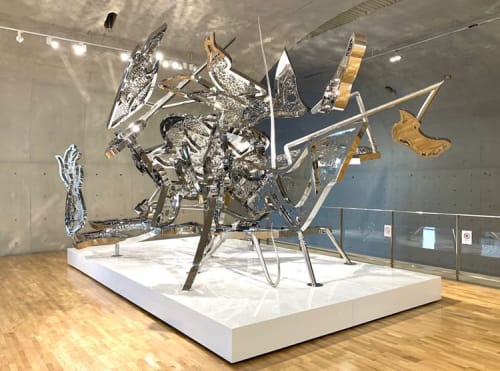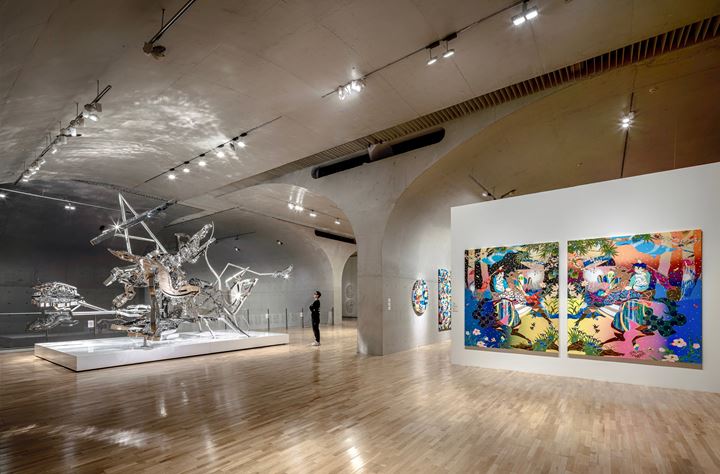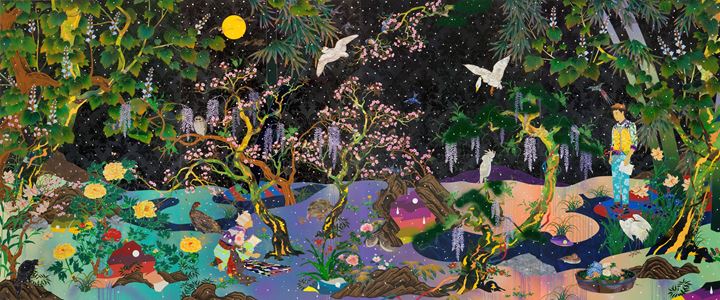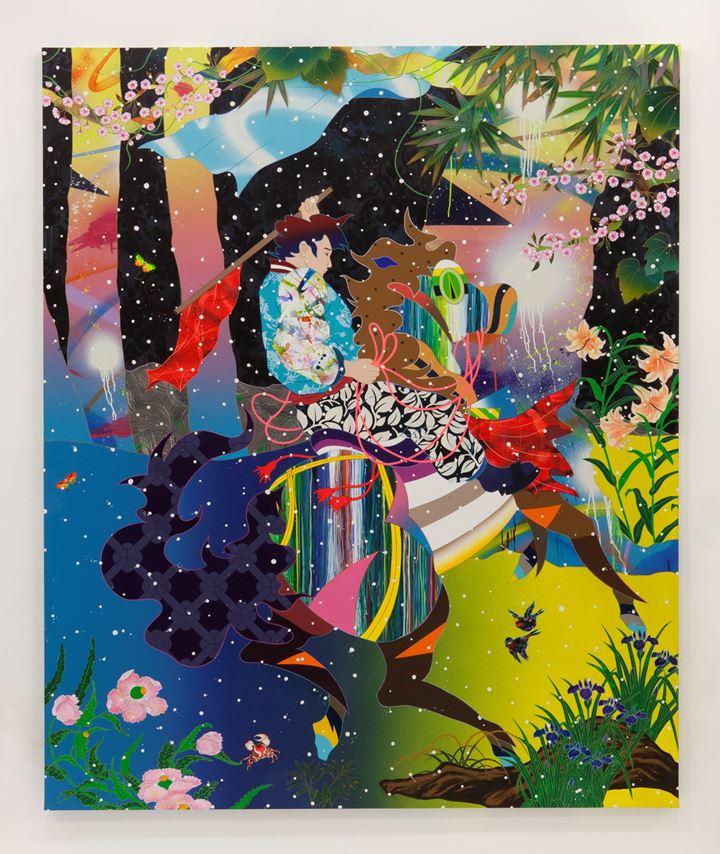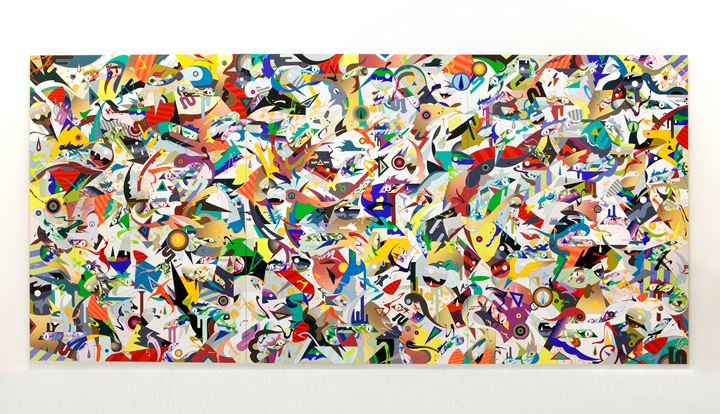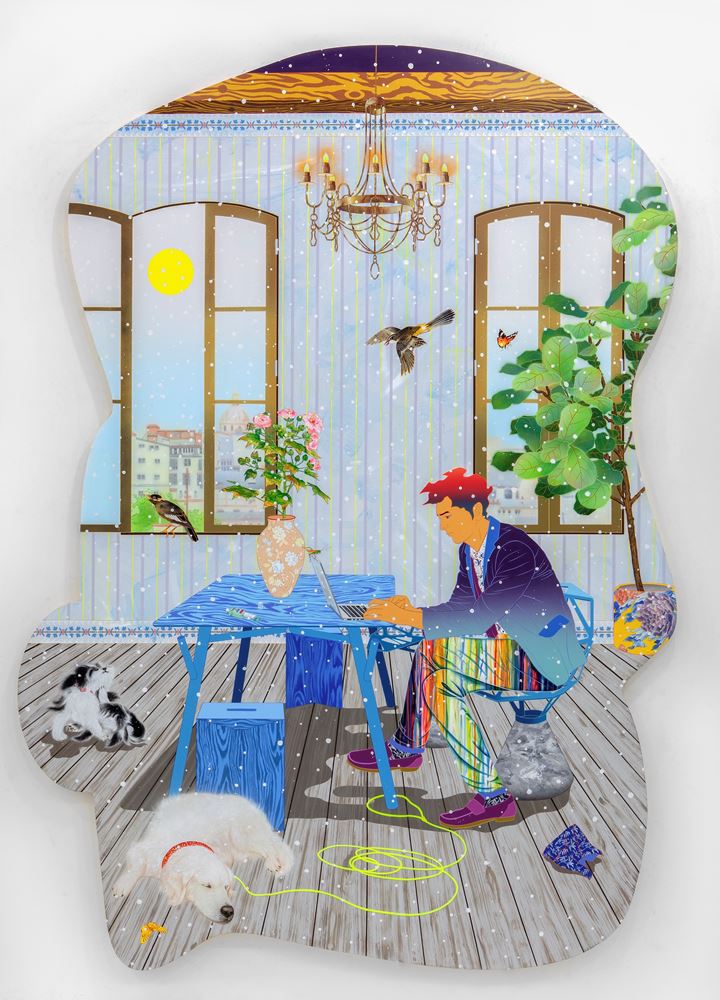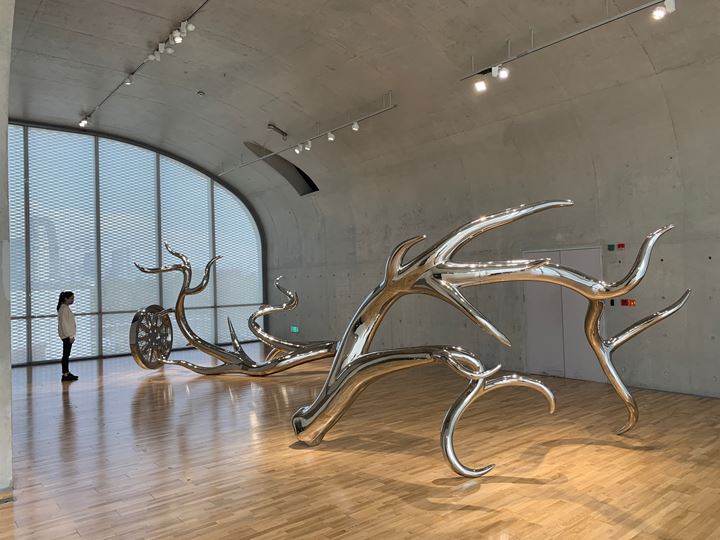Amid a global pandemic, Tomokazu Matsuyama's first solo exhibition in Shanghai at Long Museum West Bund (12 November 2020–24 January 2021) suggests that resilience is possible.
The exhibition's title Accountable Nature refers to force majeure, a term commonly used to release a party from its contractual obligations due to unexpected and unaccountable circumstances. Covid-19 may be considered one such unaccountable event.
Among the 28 works on view is Nirvana Tropicana (2020), an abstract stainless-steel sculpture made up of forms resembling human limbs, animals, foliage, and other natural motifs.
As the artist told Ocula Magazine, the work was inspired by the aftermath of a tropical storm in New York in 2020. Despite the damage, he remembers people sitting happily outside. Though fragmented, the different parts of Nirvana Tropicana exist in an odd harmony, reflecting humankind's ability to overcome calamity.
Carefully hand-rendered by the artist and his assistant or collaborators, Matsuyama's large-scale paintings, sculptures, and murals collapse multiple time periods and spaces. Using a cacophony of colour, the artist merges disparate elements from traditional and contemporary, representational and abstract, and high and low art.
Examples include Hanabi He Said I Said (2019) and Us Rise Sun Rise (2020), a pair of mirroring paintings that share a wall at the Long Museum. The motif of a rider on horseback, along with an overall flatness, evoke Ukiyo-e—a Japanese art form that flourished in the culturally rich Edo period (1603–1868).
Matsuyama's eclectic palette stems from his bi-cultural background: born in Japan, the artist grew up in the United States after his family relocated to California in the 1980s. Upon graduating from Tokyo's Sophia University, where he studied management, he moved to New York in 2000 to obtain an MFA in communications design from Pratt Institute.
Using a cacophony of colour, the artist merges disparate elements from traditional and contemporary, representational and abstract, and high and low art.
Emerging out of this odyssey, Matsuyama began to reexamine fixed notions of national and individual identities. Themes of travel, migration, and the freedom of movement are perhaps reflected in the birds that inhabit many of Matsuyama's works.
In Keep Fishin' For Twilight (2017), a 4.5-metre-wide painting that occupies an entire wall of Long Museum, a geometric lattice of rounded heads and beaks can be perceived amidst an explosion of colours. 'Cluster' (2020), a series of 33 panel paintings made during New York's lockdown, also delineate flocks of birds through abstracted shapes and vibrant hues.
These winged creatures derive from a superstition associated with origami in Japan, in which folding 1,000 paper cranes grants a wish. Matsuyama's birds are similarly on a mission, pervading abstraction's hardened dedication to the formal with fluid beliefs of the vernacular.
An earlier painting, We Met Thru Match.com (2016), depicts a fantastical night scene with blooming flowers and trees, frolicking birds, and the land in gradients that resemble the northern lights. Two young people, one standing and the other crouching, lock eyes.
The blurring of worlds—material and digital, and inside and outside—can be glimpsed in the shaped canvas painting Desktop Utopia (2020). In an interior fitted with pastel blue wallpaper, wooden flooring, and an ornate chandelier, a young man sits at a desk with his laptop and dogs by his feet as birds and butterflies flutter in.
Since 2019, Matsuyama has been engaged in a series of public works, from murals in The Bowery, New York, and Beverly Hills, California to two monumental public sculptures unveiled in Tokyo in July 2020.
Hanao-San is the centrepiece of a public plaza designed for Shinjuku East Square's new community art park outside Shinjuku Station: a 25-foot-tall stainless-steel abstraction of a young boy holding a bouquet of flowers. The other, presented at the Meiji Jingu Forest Festival, can be seen at Long Museum: Wheels of Fortune combines the forms of a wheel and deer antlers rendered in stainless steel to present nature and machine in coexistence.
At first glance, Matsuyama's large-scale stainless-steel sculptures appear distant from his usual paintings dominated by colour. But as the artist reveals, this is not necessarily the case: 'Everything outside is colourful. Outside the white cube, colour gets lost. But place a white or colourless work with a mirrored finish in public, then it becomes colourful.'—[O]
